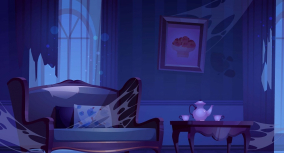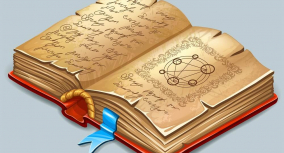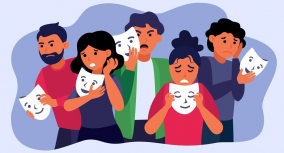Since its publication in 1915, The Metamorphosis has puzzled readers and critics all over the world. Kafka’s most famous novella centers around Gregor Samsa’s transformation into a gigantic insect. The Metamorphosis symbolism, both intricate and surreal, is crucial for understanding the novella’s deeper meaning. In The Metamorphosis, symbols are used to highlight the themes of alienation and dehumanization, allowing readers to feel the main character’s emotions rather than merely read about them.
The most important symbols in The Metamorphosis are:
- The father’s uniform (represents authority, power, and social status)
- The picture of the woman in furs (hanging in Gregor’s room, the portrait serves as a reminder of his previous dreams and aspirations)
- The food (symbolizes Gregor’s craving for attention)

Want to see these symbols analyzed in more detail? Read on this guide by our custom writing help team!
The Picture of the Woman in Furs in The Metamorphosis
The portrait of a woman is one of the main symbols in The Metamorphosis. There are several possible explanations of what it might represent as a whole and for Gregor personally. Gregor works at a job that he hates to support his family. He does it because of the obligations he has in front of his boss and parents.
Gregor cut out a picture of a woman in fur from an illustrated journal and put it on the wall. It emphasizes his desire for financial success. The fur is a universal symbol of wealth, and the woman has an excessive amount of it: it is on her hat, boa, and muff. It is also the only decoration in Gregor’s room. The description of the room is closer to a hotel room than someone’s bedroom. So, this picture with the handmade frame emphasizes Gregor’s necessity to decorate his life.
The picture is the first thing that Gregor notices when he wakes up. The reader learns that he only recently hung the image and placed it into a frame. Most probably, this portrait is the last thing that Gregor saw before he went to sleep as a human. For him, this picture could also symbolize his desire for romantic love and human connection. After his transformation, it serves as a reminder of his former life and his depleting humanity. People are the only living beings who can craft things. As an insect, Gregor will not be able to create anything. Some critics view the frame as a separate The Metamorphosis symbol.
Gregor does not explain what attracted him to this image in the first place. As he turns into an insect, his isolation grows. The portrait becomes a symbol of all the things that will never be attained: a higher social status in the society, a real human connection, love, and a family. When Grete removes objects from his room, this portrait is the only possession Gregor cares about.
Quotes about The Portrait of a Woman
A collection of textile samples lay spread out on the table – Samsa was a traveling salesman – and above it there hung a picture that he had recently cut out of an illustrated magazine and housed in a nice, gilded frame. It showed a lady fitted out with a fur hat and fur boa who sat upright, raising a heavy fur muff that covered the whole of her lower arm towards the viewer.
The Metamorphosis, Narrator, Part I
He hurried up onto the picture and pressed himself against its glass, it held him firmly and felt good on his hot belly. This picture at least, now totally covered by Gregor, would certainly be taken away by no- one. He turned his head to face the door into the living room so that he could watch the women when they came back.
The Metamorphosis, Narrator, Part II
“What shall we take now, then?”, said Grete and looked around. Her eyes met those of Gregor on the wall. Perhaps only because her mother was there, she remained calm, bent her face to her so that she would not look round and said, albeit hurriedly and with a tremor in her voice: “Come on, let’s go back in the living room for a while?” Gregor could see what Grete had in mind, she wanted to take her mother somewhere safe and then chase him down from the wall. Well, she could certainly try it! He sat unyielding on his picture. He would rather jump at Grete’s face.
The Metamorphosis, Grete Samsa, Narrator, Part II
The Father’s Uniform in The Metamorphosis
Throughout the novella, Gregor’s father goes through three stages in his transformation. So, his uniform becomes one of The Metamorphosis symbols.
At first, the reader sees Mr. Samsa as a man who never takes off his nightgown. When he gets his job as a banker’s assistant, he starts wearing a sharp-looking uniform. It looks fresh and new at the beginning, but then it begins to look used and unclean. The father refuses to take it off either because of tiredness or because of laziness. It proves that with time everything can change because of how unstable life is. In the novella, this sense of instability manifests through Gregor’s metamorphosis, the changed sentiment towards him, the altered social status of the family, and their attitude towards work.
Mr. Samsa’s uniform is a very complex symbol. It demonstrates a personal transformation of Gregor’s father and the transformation in Samsa’s family. In the beginning, Gregor’s father is a weak man who is unable to take care of his family. The uniform symbolizes the change in family structure as the father becomes the head of the family.
The outfit is also crucial for seeing the dynamics in father-son relationships. The uniform demonstrates the reversal of the roles. The son becomes an insect, hiding in the room, and the father is an active member of the working force. In the third part of the story, Gregor is in the state where his father was for five years.
There is a sense of injustice when the reader sees Mr. Samsa wearing the uniform. It shows that Gregor’s effort to work tirelessly was useless because the father could work. In a way, the outfit also becomes a symbol of the lack of honesty and compassion in the family.
Quotes about The Father’s Uniform
He really had not imagined his father the way he stood there now; of late, with his new habit of crawling about, he had neglected to pay attention to what was going on the rest of the flat the way he had done before. He really ought to have expected things to have changed, but still, still, was that really his father? The same tired man as used to be laying there entombed in his bed when Gregor came back from his business trips, who would receive him sitting in the armchair in his nightgown when he came back in the evenings.
The Metamorphosis, Narrator, Part II
He was standing up straight enough now; dressed in a smart blue uniform with gold buttons, the sort worn by the employees at the banking institute; above the high, stiff collar of the coat his strong double-chin emerged; under the bushy eyebrows, his piercing, dark eyes looked out fresh and alert; his normally unkempt white hair was combed down painfully close to his scalp. He took his cap, with its gold monogram from, probably, some bank, and threw it in an arc right across the room onto the sofa, put his hands in his trouser pockets, pushing back the bottom of his long uniform coat, and, with look of determination, walked towards Gregor.
The Metamorphosis, Narrator, Part II
With a kind of stubbornness, Gregor’s father refused to take his uniform off even at home; while his nightgown hung unused on its peg Gregor’s father would slumber where he was, fully dressed, as if always ready to serve and expecting to hear the voice of his superior even here. The uniform had not been new to start with, but as a result of this it slowly became even shabbier despite the efforts of Gregor’s mother and sister to look after it. Gregor would often spend the whole evening looking at all the stains on this coat, with its gold buttons always kept polished and shiny, while the old man in it would sleep, highly uncomfortable but peaceful.
The Metamorphosis, Narrator, Part III
The Food in The Metamorphosis
Analyzing food symbolism in The Metamorphosis can deepen an overall understanding of the novella. Food is mentioned in every chapter. Moreover, it is one of the first things Gregor wants when he wakes up. In the first chapter, it can be seen as a symbol of Gregor’s desire for attention. At the beginning of the story, Gregor confesses that he was not eating well before the transformation. He says that the job made him have “bad and irregular food.”
When Gregor turns into an insect, he quickly learns that his food preferences change too. He realizes it after Grete brings him his favorite comfort food (milk and bread) and cannot stand it. Grete’s thoughtfulness indicates a concern that his family has for him despite his new form. After Gregor rejects milk and bread, she refuses to pick the leftovers with her bare hands. Instead, she uses a “rag,” which demonstrates her repulsion.
Nevertheless, she brings him a variety of foods, including some rotten vegetables and stale bread. Gregor discovers that he likes rotten food instead of fresh one. By choosing to eat “trash,” Gregor’s position in the family lowers even more. Another important detail is that Gregor is eating in his room. He is not allowed to dine with the rest of the family, which means that he is already excluded.
Throughout the second part, Grete shows concern for Gregor’s appetite. It can be seen as proof that she cares about him. The sister feels sad when he does not touch his food. For her, bringing food is the only way in which she can show affection for her brother. It changes in the second part of the second chapter when all the family members try to move on with their lives. In this regard, apple symbolism in The Metamorphosis can help understand this shift. The father uses an apple to injure his son. Traditionally, an apple is a symbol of love. However, here it serves as a way to emphasize the family’s inability to accept the new Gregor.
As Grete’s indifference grows, she stops bringing food for him. Instead, the family hires a charwoman to take care of Gregor’s physical needs. However, no one cares for his emotional well-being, and because of that, he stops eating. More than being physically hungry, Gregor starves for love and affection from his family.
Quotes about The Food
Travelling day in and day out. Doing business like this takes much more effort than doing your own business at home, and on top of that there’s the curse of travelling, worries about making train connections, bad and irregular food, contact with different people all the time so that you can never get to know anyone or become friendly with them.
The Metamorphosis, Gregor Samsa, Part I
The first thing he wanted to do was to get up in peace without being disturbed, to get dressed, and most of all to have his breakfast.
The Metamorphosis, Narrator, Part I
It was only when he had reached the door that he realised what it actually was that had drawn him over to it; it was the smell of something to eat. By the door there was a dish filled with sweetened milk with little pieces of white bread floating in it. He was so pleased he almost laughed, as he was even hungrier than he had been that morning, and immediately dipped his head into the milk, nearly covering his eyes with it. But he soon drew his head back again in disappointment; not only did the pain in his tender left side make it difficult to eat the food – he was only able to eat if his whole body worked together as a snuffling whole – but the milk did not taste at all nice.
The Metamorphosis, Narrator, Part II
In order to test his taste, she brought him a whole selection of things, all spread out on an old newspaper. There were old, half-rotten vegetables; bones from the evening meal, covered in white sauce that had gone hard; a few raisins and almonds; some cheese that Gregor had declared inedible two days before; a dry roll and some bread spread with butter and salt.
The Metamorphosis, Narrator, Part II











